formerly eScholarship Editions


|
|
|
|
Your search for
'Japan' in subject
found 64 book(s). | Modify Search | Displaying 1 - 20 of 64 book(s) | |
| 1. |  | Title: Japan under construction: corruption, politics, and public works Author: Woodall, Brian Published: University of California Press, 1996 Subjects: Politics | Japan Publisher's Description: In 1987, Japan excluded American firms from bidding on the multibillion-dollar New Kansai International Airport, sparking yet another trade dispute between the United States and Japan. The State Department, Congress, and the President himself were caught up in the dispute, which still smolders even after Congress passed a threatening resolution to retaliate. Scandal after scandal - both domestic and international - splashes across headlines in Japan, generating wave after wave of attempts at reform. Why is this industry so rife with bid-rigging, collusion, and pork-barrel politics? What are the political forces behind the industry? Brian Woodall answers these questions in this book, based on extensive research and over one hundred candid and revealing interviews with contractors, industry association officials, public works bureaucrats, elected politicians and aides, political party officials, journalists, and scholars.This inside view begins with a profile of the institutionalized system of bid-rigging in the public construction market. It explores the powerful positions of unelected bureaucrats, who are often hired by private-sector firms after retirement. Career politicians within the Liberal Democratic Party are revealed to use the construction industry to exploit party factions toward their own electoral ends. Recent events - the Sagawa affair and the massive "general contractors" (zenekon) scandal as well as the political reform movements that followed them - are examined in detail. Throughout, Brian Woodall illuminates the construction rift between Japan and the United States and demonstrates how international pressures were subverted within the shadowy domestic system. Japan Under Construction is must reading for anyone interested in Japanese politics, United States-Japan trade relations, and political corruption and reform anywhere in the world. [brief] Similar Items |
| 2. | 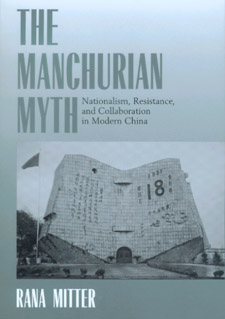 | Title: The Manchurian myth: nationalism, resistance and collaboration in modern China Author: Mitter, Rana 1969- Published: University of California Press, 2000 Subjects: History | China | Japan Publisher's Description: A powerful element in twentieth-century Chinese politics has been the myth of Chinese resistance to Japan's seizure of Manchuria in 1931. Investigating the shifting alliances of key players in that event, Rana Mitter traces the development of the narrative of resistance to the occupation and shows how it became part of China's political consciousness, enduring even today. After Japan's September 1931 military strike leading to a takeover of the Northeast, the Chinese responded in three major ways: collaboration, resistance in exile, and resistance on the ground. What motives prompted some Chinese to collaborate, others to resist? What were conditions like under the Japanese? Through careful reading of Chinese and Japanese sources, particularly local government records, newspapers, and journals published both inside and outside occupied Manchuria, Mitter sheds important new light on these questions. [brief] Similar Items |
| 3. |  | Title: Yakuza: Japan's criminal underworld Author: Kaplan, David E 1955- Published: University of California Press, 2003 Subjects: Sociology | Japan | Politics | Asian History Publisher's Description: Known for their striking full-body tattoos and severed fingertips, Japan's gangsters comprise a criminal class eighty thousand strong - more than four times the size of the American Mafia. Despite their criminal nature, the yakuza are accepted by fellow Japanese to a degree guaranteed to shock most Westerners. Here is the first book to reveal the extraordinary reach of Japan's Mafia. Originally published in 1986, Yakuza was so controversial in Japan that it could not be published there for five years. But in the West it has long served as the standard reference on Japanese organized crime, inspiring novels, screenplays, and criminal investigations. David E. Kaplan and Alec Dubro spent nearly two decades conducting hundreds of interviews with everyone from street-level hoodlums and police to Japan's most powerful godfathers. The result is a searing indictment of corruption in the world's second-largest economy. This updated, expanded, and thoroughly revised edition of Yakuza tells the full story of Japan's remarkable crime syndicates, from their feudal start as bands of medieval outlaws to their emergence as billion-dollar investors in real estate, big business, art, and more. [brief] Similar Items |
| 4. | 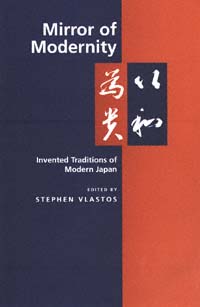 | Title: Mirror of modernity: invented traditions of modern Japan Author: Vlastos, Stephen 1943- Published: University of California Press, 1998 Subjects: History | Japan | Asian History Publisher's Description: This collection of essays challenges the notion that Japan's present cultural identity is the simple legacy of Japan's premodern and insular past. Building on the pathbreaking historical analysis of British traditions, The Invention of Tradition , sixteen American and Japanese scholars examine "age- . . . [more] Similar Items |
| 5. | 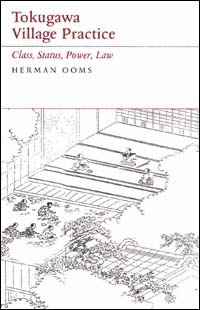 | Title: Tokugawa village practice: class, status, power, law Author: Ooms, Herman Published: University of California Press, 1996 Subjects: History | Asian History | Japan | Law Publisher's Description: In contrast to modern Japanese citizens, during the Tokugawa period (1600-1868) villagers frequently resorted to lawsuits to settle conflicts. Herman Ooms uses colorful, skillfully analyzed case studies to trace the evolution of class and status conflicts through lawsuits and petitions in villages. Inspired by the work of Max Weber and Pierre Bourdieu, this exploration of social and legal history illuminates the texture and detail of village life, focusing on relations to authority.Opening with a story of an angry peasant woman's lifelong struggle against village authority (a story involving murder and revenge), Ooms highlights the role played by obscure historical actors including local elites, commoners, women, and outcastes. He also discusses the important role lineages played in village politics and examines the origins of discrimination against Japan's burakumin , or outcastes. [brief] Similar Items |
| 6. | 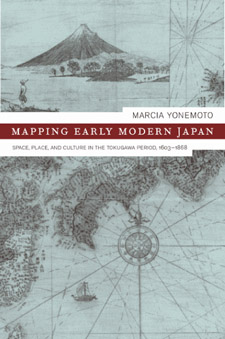 | Title: Mapping early modern Japan: space, place, and culture in the Tokugawa period, 1603-1868 Author: Yonemoto, Marcia 1964- Published: University of California Press, 2003 Subjects: History | Asian Studies | Geography | Japan Publisher's Description: This elegant history considers a fascinating array of texts, cultural practices, and intellectual processes - including maps and mapmaking, poetry, travel writing, popular fiction, and encyclopedias - to chart the emergence of a new geographical consciousness in early modern Japan. Marcia Yonemoto's wide-ranging history of ideas traces changing conceptions and representations of space by looking at the roles played by writers, artists, commercial publishers, and the Shogunal government in helping to fashion a new awareness of space and place in this period. Her impressively researched study shows how spatial and geographical knowledge confined to elites in early Japan became more generalized, flexible, and widespread in the Tokugawa period. In the broadest sense, her book grasps the elusive processes through which people came to name, to know, and to interpret their worlds in narrative and visual forms. [brief] Similar Items |
| 7. |  | Title: Bicycle citizens: the political world of the Japanese housewife Author: LeBlanc, Robin M 1966- Published: University of California Press, 1999 Subjects: Politics | Japan | Women's Studies Publisher's Description: While the typical Japanese male politician glides through his district in air-conditioned taxis, the typical female voter trundles along the side streets on a simple bicycle. In this first ethnographic study of the politics of the average female citizen in Japan, Robin LeBlanc argues that this taxi-bicycle contrast reaches deeply into Japanese society.To study the relationship between gender and liberal democratic citizenship, LeBlanc conducted extensive ethnographic fieldwork in suburban Tokyo among housewives, volunteer groups, consumer cooperative movements, and the members of a committee to reelect a female Diet member who used her own housewife status as the key to victory. LeBlanc argues that contrary to popular perception, Japanese housewives are ultimately not without a political world.Full of new and stimulating material, engagingly written, and deft in its weaving of theoretical perspectives with field research, this study will not only open up new dialogues between gender theory and broader social science concerns but also provide a superb introduction to politics in Japan as a whole. [brief] Similar Items |
| 8. |  | Title: Japanese workers in protest: an ethnography of consciousness and experience Author: Turner, Christena L 1949- Published: University of California Press, 1995 Subjects: Anthropology | Cultural Anthropology | Japan | Sociology Publisher's Description: This first ethnographic study of factory workers engaged in radical labor protest gives a voice to a segment of the Japanese population that has been previously marginalized. These blue-collar workers, involved in prolonged labor disputes, tell their own story as they struggle to make sense of their lives and their culture during a time of conflict and instability. What emerges is a sensitive portrait of how workers grapple with a slowed economy and the contradictions of Japanese industry in the late postwar era. The ways that they think and feel about accommodation, resistance, and protest raise essential questions about the transformation of labor practices and limits of worker cooperation and compliance. [brief] Similar Items |
| 9. | 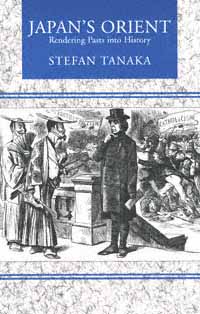 | Title: Japan's Orient: rendering pasts into history Author: Tanaka, Stefan Published: University of California Press, 1995 Subjects: History | Asian History | Japan Publisher's Description: Stefan Tanaka examines how late nineteenth and early twentieth century Japanese historians created the equivalent of an "Orient" for their new nation state. He argues that the Japanese attempted to use a variety of pasts - Chinese, Indian, and proto-historic Japanese - to construct an identity that . . . [more] Similar Items |
| 10. |  | Title: The culture of civil war in Kyoto Author: Berry, Mary Elizabeth 1947- Published: University of California Press, 1997 Subjects: History | Japan | Asian History Publisher's Description: How do ordinary people respond to prolonged terror? The convulsion of Japan's "Warring States" period between 1467 and 1568 destroyed the medieval order and exposed the framework of an early modern polity. Mary Elizabeth Berry investigates the experience of upheaval in Kyoto during this time.Using diaries and urban records (extensively quoted in the text), Berry explores the violence of war, misrule, private justice, outlawry, and popular uprising. She also examines the structures of order, old and new, that abated chaos and abetted social transformation.The wartime culture of Kyoto comes to life in a panoramic study that covers the rebellion of the Lotus sectarians, the organization of work and power in commoner neighborhoods, the replotting of urban geography, and the redefinition of authority and prestige in the arena of play. [brief] Similar Items |
| 11. |  | Title: Importing diversity: inside Japan's JET Program Author: McConnell, David L 1959- Published: University of California Press, 2000 Subjects: Anthropology | Japan | Politics | Education Publisher's Description: In 1987, the Japanese government inaugurated the Japan Exchange and Teaching (JET) program in response to global pressure to "internationalize" its society. This ambitious program has grown to be a major government operation, with an annual budget of $400 million (greater than the United States NEA and NEH combined) and more than six thousand foreign nationals employed each year in public schools all over Japan.How does a relatively homogeneous and insular society react when a buzzword is suddenly turned into a reality? How did the arrival of so many foreigners affect Japan's educational bureaucracy? How did the foreigners themselves feel upon discovering that English teaching was not the primary goal of the program? In this balanced study of the JET program, David L. McConnell draws on ten years of ethnographic research to explore the cultural and political dynamics of internationalization in Japan. Through vignettes and firsthand accounts, he highlights and interprets the misunderstandings of the early years of the program, traces the culture clashes at all levels of the bureaucracy, and speculates on what lessons the JET program holds for other multicultural initiatives.This fascinating book's jargon-free style and interdisciplinary approach will make it appealing to educators, policy analysts, students of Japan, and prospective and former JET participants. [brief] Similar Items |
| 12. | 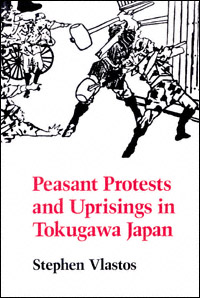 | Title: Peasant protests and uprisings in Tokugawa Japan Author: Vlastos, Stephen 1943- Published: University of California Press, 1990 Subjects: History | Japan | Asian History Publisher's Description: The Japanese peasant has been thought of as an obedient and passive subject of the feudal ruling class. Yet Tokugawa villagers frequently engaged in unlawful and disruptive protests. Moreover, the frequency and intensity of the peasants' collective action increased markedly at the end of the Tokugawa period. Stephen Vlastos's examination of the changing patterns of peasant protest in the Fukushima area shows that peasant mobilization was restricted both ideologically and organizationally and that peasants did not become a prime moving force in the Meiji Restoration. [brief] Similar Items |
| 13. |  | Title: Dōgen's manuals of Zen meditation Author: Bielefeldt, Carl Published: University of California Press, 1990 Subjects: Religion | Buddhism | Philosophy | Japan Publisher's Description: Zen Buddhism is perhaps best known for its emphasis on meditation, and probably no figure in the history of Zen is more closely associated with meditation practice than the thirteenth-century Japanese master Dogen, founder of the Soto school. This study examines the historical and religious character of the practice as it is described in Dogen's own meditation texts, introducing new materials and original perspectives on one of the most influential spiritual traditions of East Asian civilization. The Soto version of Zen meditation is known as "just sitting," a practice in which, through the cultivation of the subtle state of "nonthinking," the meditator is said to be brought into perfect accord with the higher consciousness of the "Buddha mind" inherent in all beings. This study examines the historical and religious character of the practice as it is described in Dogen's own meditation texts, introducing new materials and original perspectives on one of the most influential spiritual traditions of East Asian civilization. [brief] Similar Items |
| 14. |  | Title: Learning to go to school in Japan: the transition from home to preschool life Author: Peak, Lois Published: University of California Press, 1991 Subjects: Anthropology | Cultural Anthropology | Japan | Education Publisher's Description: Japanese two-year-olds are indulged, dependent, and undisciplined toddlers, but by the age of six they have become obedient, self-reliant, and cooperative students. When Lois Peak traveled to Japan in search of the "magical childrearing technique" behind this transformation, she discovered that the answer lies not in the family but in the preschool, where teachers gently train their pupils in proper group behavior. Using case studies drawn from two contrasting schools, Peak documents the important early stages of socialization in Japanese culture.Contrary to popular perceptions, Japanese preschools are play-centered environments that pay little attention to academic preparation. It is here that Japanese children learn their first lessons in group life. The primary goal of these cheerful--even boisterous--settings is not to teach academic facts of learning-readiness skills but to inculcate behavior and attitudes appropriate to life in public social situations.Peak compares the behavior considered permissible at home with that required of children at preschool, and argues that the teacher is expected to be the primary agent in the child's transition. Step by step, she brings the socialization process to life, through a skillful combination of classroom observations, interviews with mothers and teachers, transcripts of classroom events, and quotations from Japanese professional literature. [brief] Similar Items |
| 15. | 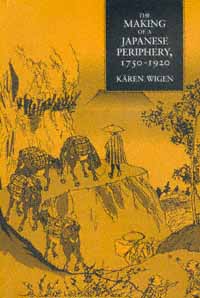 | Title: The making of a Japanese periphery, 1750-1920 Author: Wigen, Kären 1958- Published: University of California Press, 1995 Subjects: History | Geography | Asian History | Japan Publisher's Description: Contending that Japan's industrial and imperial revolutions were also geographical revolutions, Kären Wigen's interdisciplinary study analyzes the changing spatial order of the countryside in early modern Japan. Her focus, the Ina Valley, served as a gateway to the mountainous interior of central Japan. Using methods drawn from historical geography and economic development, Wigen maps the valley's changes - from a region of small settlements linked in an autonomous economic zone, to its transformation into a peripheral part of the global silk trade, dependent on the state. Yet the processes that brought these changes - industrial growth and political centralization - were crucial to Japan's rise to imperial power. Wigen's elucidation of this makes her book compelling reading for a broad audience. [brief] Similar Items |
| 16. | 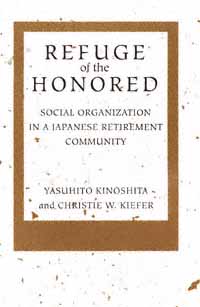 | Title: Refuge of the honored: social organization in a Japanese retirement community Author: Kinoshita, Yasuhito 1953- Published: University of California Press, 1993 Subjects: Anthropology | Cultural Anthropology | Sociology | Japan Publisher's Description: Faced with the decline of the traditional family and the explosive growth of the over-65 population, the Japanese are looking for new ways to care for their elders. This timely study documents the birth of a major social phenomenon in Japan - the planned retirement community.In the mid-1980s, Yasuhito Kinoshita spent a year living in Japan's first such community, Fuji-no-Sato. His collaboration with Christie W. Kiefer, a cultural gerontologist, is the first detailed study of a retirement community in a non-Western culture.Fuji-no-Sato is a social community with no visible traditions. Kinoshita and Kiefer show that its residents' preference for long-established relationships creates the need for the invention of relationships that have no precedent in Japanese society.This book reveals much about Japanese culture, and about the "graying of society" that plagues the newly industrialized countries of Asia. Its lessons about sensitivity to the elderly's values and the need for clear communication have important applications in other cultures as well. [brief] Similar Items |
| 17. |  | Title: Academic freedom and the Japanese imperial university, 1868-1939 Author: Marshall, Byron K Published: University of California Press, 1992 Subjects: History | Asian History | Japan | Education Publisher's Description: Byron K. Marshall offers here a dramatic study of the changing nature and limits of academic freedom in prewar Japan, from the Meiji Restoration to the eve of World War II.Meiji leaders founded Tokyo Imperial University in the late nineteenth century to provide their new government with necessary technical and theoretical knowledge. An academic elite, armed with Western learning, gradually emerged and wielded significant influence throughout the state. When some faculty members criticized the conduct of the Russo-Japanese War the government threatened dismissals. The faculty and administration banded together, forcing the government to back down. By 1939, however, this solidarity had eroded. The conventional explanation for this erosion has been the lack of a tradition of autonomy among prewar Japanese universities. Marshall argues instead that these later purges resulted from the university's 40-year fixation on institutional autonomy at the expense of academic freedom.Marshall's finely nuanced analysis is complemented by extensive use of quantitative, biographical, and archival sources. [brief] Similar Items |
| 18. |  | Title: Postwar Japan as history Author: Gordon, Andrew 1952- Published: University of California Press, 1993 Subjects: History | Politics | Japan | Asian History Publisher's Description: Japan's catapult to world economic power has inspired many studies by social scientists, but few have looked at the 45 years of postwar Japan through the lens of history. The contributors to this book seek to offer such a view. As they examine three related themes of postwar history, the authors describe an ongoing historical process marked by unexpected changes, such as Japan's extraordinary economic growth, and unanticipated continuities, such as the endurance of conservative rule. A provocative set of interpretative essays by eminent scholars, this book will appeal to anyone interested in the history of twentieth-century Japan and the dilemmas facing Japan today. [brief] Similar Items |
| 19. | 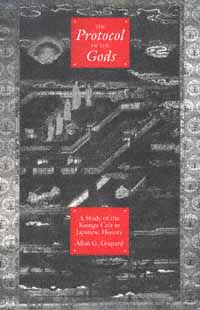 | Title: The protocol of the gods: a study of the Kasuga cult in Japanese history Author: Grapard, Allan G Published: University of California Press, 1993 Subjects: Religion | Asian History | Japan Publisher's Description: The Protocol of the Gods is a pioneering study of the history of relations between Japanese native institutions (Shinto shrines) and imported Buddhist institutions (Buddhist temples). Using the Kasuga Shinto shrine and the Kofukuji Buddhist temple, one of the oldest and largest of the shrine-temple complexes, Allan Grapard characterizes what he calls the combinatory character of pre-modern Japanese religiosity. He argues that Shintoism and Buddhism should not be studied in isolation, as hitherto supposed. Rather, a study of the individual and shared characteristics of their respective origins, evolutions, structures, and practices can serve as a model for understanding the pre-modern Japanese religious experience.Spanning the years from a period before historical records to the forcible separation of the Kasuga-Kofukuji complex by the Meiji government in 1868, Grapard presents a wealth of little-known material. He includes translations of rare texts and provides new, accessible translations of familiar documents. [brief] Similar Items |
| 20. |  | Title: Winners in peace: MacArthur, Yoshida, and postwar Japan Author: Finn, Richard B Published: University of California Press, 1992 Subjects: History | Asian History | Japan | Politics Publisher's Description: Singular for its breadth and balance, Winners in Peace chronicles the American Occupation of Japan, an episode that profoundly shaped the postwar world. Richard B. Finn, who participated in the Occupation as a young naval officer and diplomat, tells the full story of the activities from 1945 to 1952. He focuses on the two main actors, General Douglas MacArthur and Japanese Prime Minister Shigeru Yoshida, and details the era's major events, programs, and personalities, both American and Japanese.Finn draws on an impressive range of sources - American, Japanese, British, and Australian - including interviews with nearly one hundred participants in the Occupation. He describes the war crimes trials, constitutional reforms, and American efforts to rebuild Japan. The work of George Kennan in making political stability and economic recovery the top goals of the United States became critical in the face of the developing Cold War. Winners in Peace will aid our understanding of Japan today - its economic growth, its style of government, and the strong pacifist spirit of its people. [brief] Similar Items |